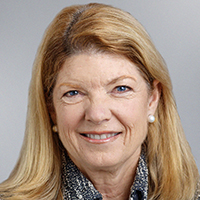Must Read Research
Also featuring commentary from our economists
September 28, 2025

Candace Browning, Head of BofA Global Research
Even the best casts need a dress rehearsal before the curtain rises. This week, we shine the spotlight on a major technological breakthrough in its early stages, analyze the wonderful market tendencies in Q4, head to Washington to explore the implications of a looming threat of a government shutdown, and zoom in on the continued demand acceleration in beauty.
IT Hardware Analyst Wamsi Mohan projects the quantum computing (QC) market will grow from ~$300 million in 2024 to ~$4 billion by 2030 as scaling challenges are solved and revenues inflect.
Pure-play quantum computing (QC) companies currently generate <$100 million in revenues. QC differs from classical computing by using qubits, which can represent 0 and 1 simultaneously (superposition), enabling exponential computing power. Six main approaches — superconducting, trapped-ion, photonic, neutral-atom, topological, and spin — are competing to achieve fault-tolerant systems, each with distinct trade-offs. Technology maturity and adoption rates vary widely, but cloud access and enterprise experimentation are growing. Once scaling breakthroughs arrive, QC could become a transformative computing platform with far-reaching commercial impact.
Head of FICC & Equity Technical Strategy Paul Ciana remarks that Q4 tends to be the most wonderful time of the year for stocks, with all 10 major indices rising historically and the Nasdaq 100 (+6.16%) and Hang Seng (+5.61%) leading gains.
The S&P 500 has climbed 74% of the time in Q4 with a 2.8% average return, aided by the “Santa rally” in weeks 11-12. After a slower October, momentum typically builds in November and December, particularly in presidential cycle year 1, when the S&P 500 has seen Q4 gains 86% of the time when January was up. Technology is Q4’s top sector (+6.64%), while Energy and Real Estate lag. In fixed income, the 5s30s curve flattens -10.6 basis points on average, and commodities show mixed patterns: oil often weakens (-3.79% 54% of the time), while precious metals strengthen late in the quarter (gold +1.8%, silver +2.44%).
The Federal Reserve Act states that the Fed will promote maximum employment, stable prices, and “moderate long-term interest rates.”
Recently, Governor Miran and Secretary Bessent both mentioned this third mandate of moderating long-term interest rates, and along with concerns from the administration about the housing market, it begs the question as to whether the moderation plan could be deployed. Mark Cabana considers it a low-likelihood scenario, but acknowledges it could happen if forward guidance is not credible. Lowering long-term rates would require the Fed to purchase assets across U.S. treasuries (UST) and mortgage backed securities, which conflicts with the balance sheet stance outlined by Secretary Bessent and Governor Miran. Such a move would likely flatten and lower the UST yield curve, inflate asset valuations, tighten MBS spreads, lower real yields, increase breakeven inflation, weaken the USD, and make funding easier. Near-term, the market is concerned about a possible U.S. government shutdown on Oct 1, but Mark suggests the economic and market impact would be modest and the shutdown likely brief.
Global beauty demand accelerated further in 3QTD, though momentum is uneven across regions and categories.
The U.S. leads the recovery, China is also improving, with August demand up 5%, building on July’s +4% and June’s -2%. Growth is strongest for international brands, supported by an 8% year-over-year acceleration on e-commerce platforms. Europe shows signs of cooling, with most Nielsen categories decelerating (vs. 2Q) outside of hair and cosmetics. LatAm and Southeast Asia remain mixed, while Korea’s new visa-free policy for Chinese group travelers from September 29th could boost 4Q trends.

Claudio Irigoyen, Head of Global Economics, BofA Global Research
In search of the lost momentum
Food for thought on three momentum dimensions. First, the third print of 2Q GDP (gross domestic product) showed that the U.S. economy grew 3.8% seasonally adjust annual rate in 2Q on the back of much stronger than expected consumption. Does this mean that the economy will continue with this strong momentum or is it just old news? Second, the front loading of exports to the U.S. indicates that we should see some payback in 2H25 for China, but will that happen or supply imbalances will continue keeping growth momentum? Finally, the U.S. Treasury announced a significant support package of $20 billion for Argentina. Can this be enough to turn the negative momentum or be the beginning of a new geopolitical strategy?
United States: Mind the (funding) gap
Congress could be barreling towards a shutdown with less than a week left in the fiscal year and little progress on talks. The economic effects of a shutdown are typically modest and short-lived. Though the drag grows with the length of the shutdown, and potential federal layoffs could have more lasting effects. If we enter a shutdown, we think it will be brief. While a brief shutdown may not have much of an economic effect, it would delay key economic data ahead of the Fed's next meeting.


